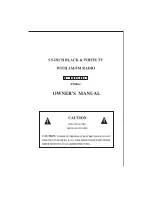
www.ducsonpower.com
P O W E R E X P E R T S
10
3.3 CONNECT TO ELECTRICAL DEVICES
Inspect power cord for damage before using. There is
a hazard of electrical shock from crushing, cutting or
heat damage.
DANGER
ELECTRICAL SHOCK
To reduce the risk of electrical shock, DO NOT use
electrical cords that are worn, frayed, bare or
otherwise damaged.
DO NOT touch bare wires or receptacles.
DO NOT handle generator or electrical cords while
standing in water, or barefoot, or while hands or feet
are wet.
1. Allow the engine to stabilize and warm up for a few
minutes after starting.
2. Make sure the electrical devices in “OFF” position.
And the load current is not higher than the maximum
withstanding current of single socket.
CAUTION
If the current of single load is higher than the
maximum withstanding current of single socket,
please connect the load) with the terminal.
3. Turn the AC breaker protector to “ON” position.
CAUTION
If connected devices overheat, turn them off and
disconnect them from generating set.
Bearing capacity
WARNING
Exceeding the generating set’s capacity can damage
the generating set and/or electrical devices connected
to it.
You must make sure your generating set can supply
enough rated(running) and surge(starting) watts for
the electrical devices you will power at the same time.
Follow these simple steps to calculate the running and
starting watts necessary for your purposes.
1. Select the electrical devices you will power at the
same time.
2. The amount of power you need to run all the
devices is the total rated (running) watts of these items.
3. Identify how many surge (starting) watts you will
need. Surge wattage is the short burst of power
needed to start electric motor-driven tools or
appliances such as a circular saw or refrigerator.
Because not all motors start at the same time, total
surge watts can be estimated by adding only the
electrical device(s) with the highest additional surge
watts to the total rated watts from step 2.












































